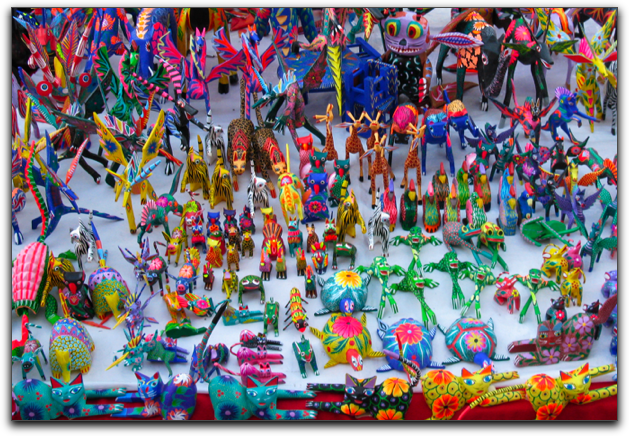

Shabbat afternoon, after a leisurely morning, Miriam and Luis took us out to visit two nearby villages. Each specializes in a craft.
The first village we reached, San Martin Tilcajete, (to the right off the road leading south out of Oaxaca) specializes in carving intricately designed and painted wooden creatures. It seems that the accepted term for these is Alebrijes though that originally refers to papier-mâché objects. We have received them as gifts from Mexico and we saw them all over the several markets and shops in Oaxaca.


Miriam and Luis have found a particularly talented artist and entrepreneurial producer of these. Jacobo and Maria Angeles have developed their home into a compound for the production of very high quality, intricately designed Alebrijes. They run the studio and give explanations of how the statuettes are made. Maria began by explaining the wood used (from the copal tree).
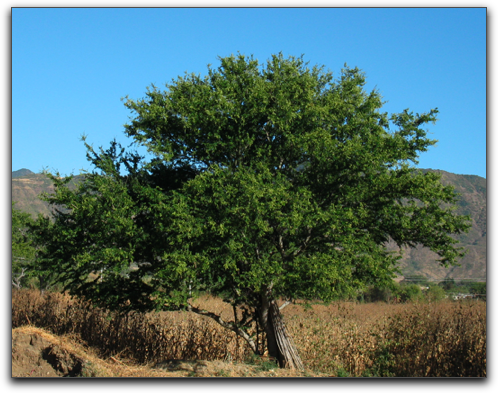
Both the male and female of the tree are used, though they have significantly different properties:


Maria explained that the sap of the copal tree is used as incense and to make paint. She then demonstrated the dye making process by mixing various powders and liquids in her hands.

They also use synthetic (acrylic) paints which have much brighter colors (and seem not to fade). We were shown these later.
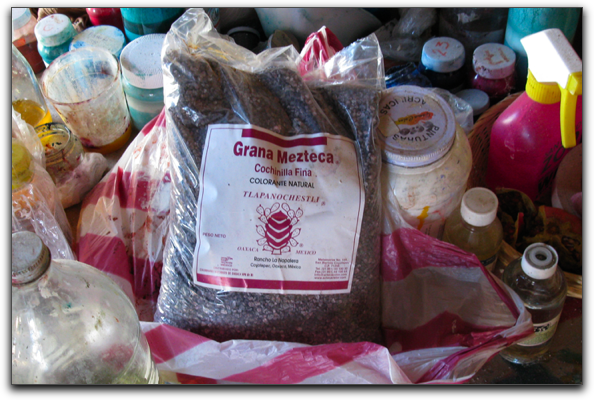
Maria stressed that she and her painters use symbols of Zapotec mythology.
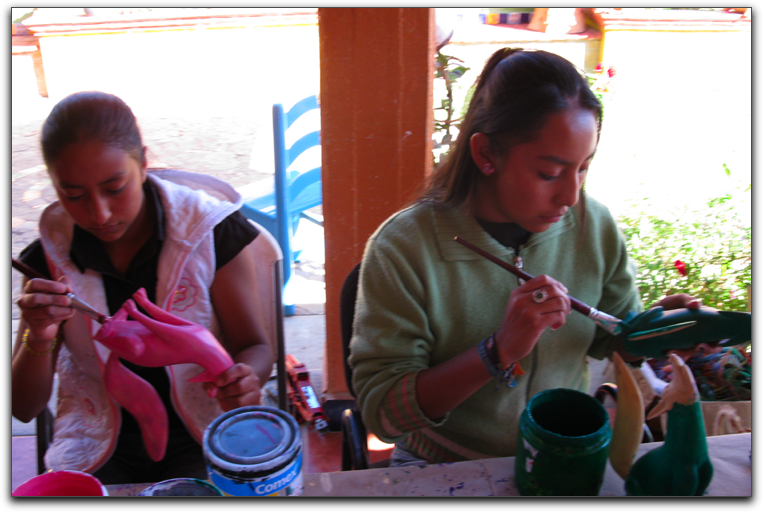
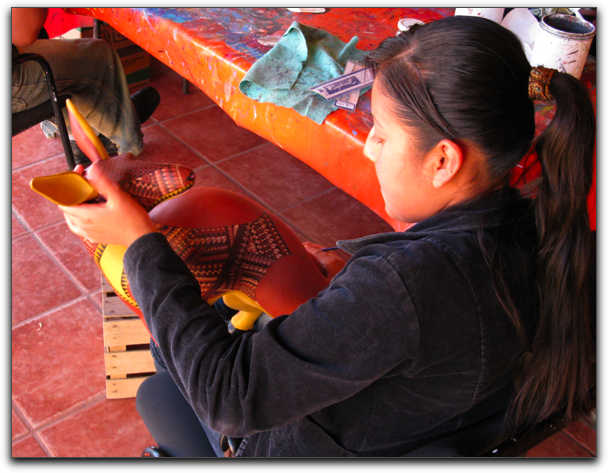
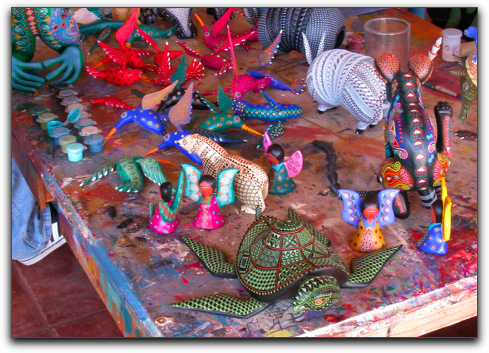
Mark can't help thinking that this is no longer a "folk art," but rather professional production now for the tourist trade. He is reminded of a course he had at NYU called Tourist Productions with Barbara Kirshenblatt-Gimblett the year Avigail was born.
We saw a familiar plant:
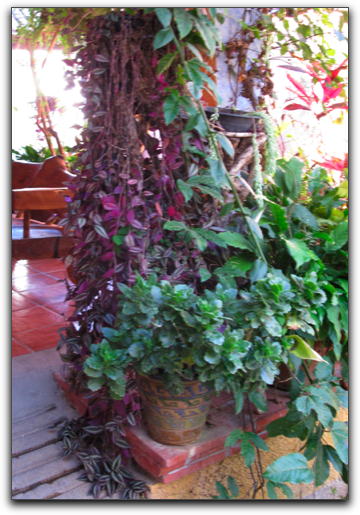
and a true piece of folk art in the compound:

which, for these wandering Jews who have connections to "the people of the bike" add additional levels of fun to the visit.
Jacobo and Maria have also opened a roadside restaurant near the entrance to the village. The beautiful view from one of the gates to the compound.
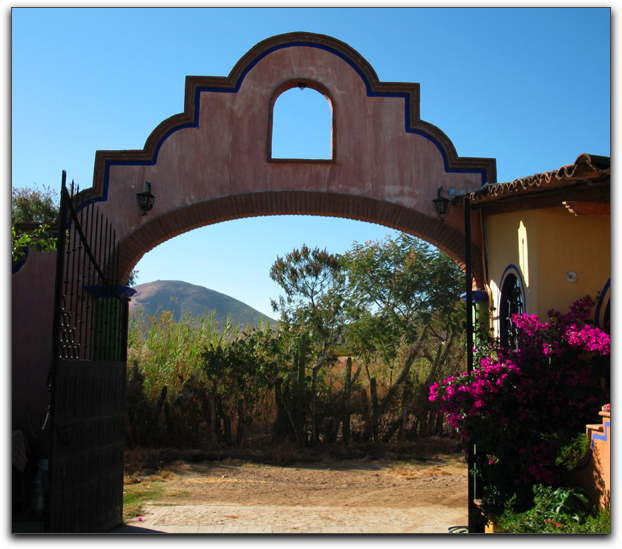
We ate our lunch at a much rustic roadside restaurant (Los Huamuches),

then continued on to our second village, Santo Tomas Jalieza, which was not far away… on the other side of the road.
Santo Tomas Jalieza specializes in woven textiles. Though the market was almost closed by the time we arrived we did manage to explore. We saw one site that, with some stretching, could have evoked an image of Jews in Eastern Europe in the 19th century.
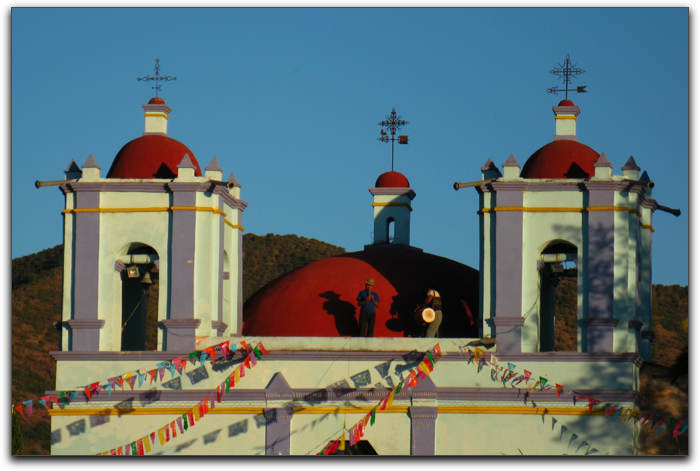
The townsfolk were busy preparing the fireworks for that night's posada.

We went home to rest, wash up, and then went into town to enjoy our last night of marimba music. The teenage marimba player had the night off, but a ten year old apprentice took his place; four people on two marimbas, drum set, congas, and electric bass.

We enjoyed more peanuts, guacamole & lemonade.